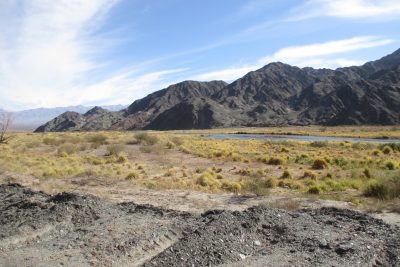New Research Improves Understanding of Ancient Landscapes
December 12, 2017

Geologists use zircon mineral grains to reconstruct what the Earth and its landscapes looked like in ancient times. These microscopic grains, commonly the width of a human hair, record detailed information on when and where they formed, making them a standard tool for studying how our planet has changed through the ages.
A new study led by The University of Texas at Austin Jackson School of Geosciences suggests that scientists may be able to better leverage zircon data to understand how landscapes have evolved over time by considering a suite of factors that can skew zircon geochronologic data and interpretation of the origin of sediments.
Phys.org, Dec.12, 2017
Featuring: Tomas Capaldi, Ph.D. student, Jackson School of Geosciences; Danny Stockli, Professor, Department of Geological Sciences, Jackson School of Geosciences.
